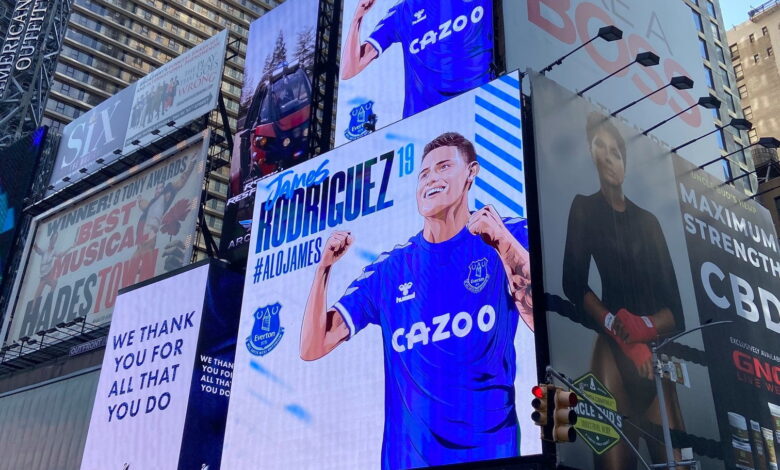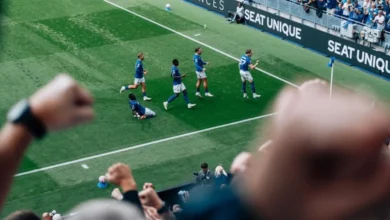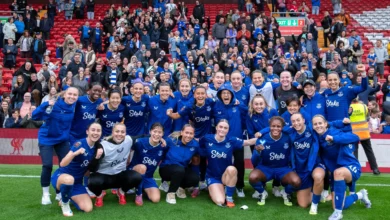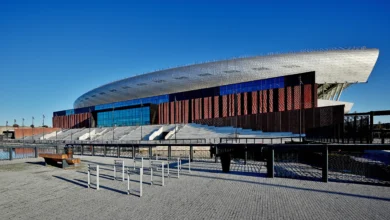
Why, despite sneers from afar, Everton’s summer transfer strategy represents a welcome change in approach
Everton kick off their 20-21 season campaign against Spurs, Sunday 13 September.
Ask 20 Evertonians for their pick from the assortment of nadirs last season and you will likely get 20 different answers. Either of the two derby debacles across Stanley Park will get a mention. As will the limp defeats to each of the three newly-promoted sides, the Black Country bruising Wolves dished out or the tame surrender at Stamford Bridge. Quite literally, there is an embarrassment of riches in this regard.
So too, surely, will July’s 1-0 defeat at Tottenham be in the conversation. Not for the result in isolation; going down to a typically stubborn José Mourinho outfit by the most slender of margins, against a side Everton have not beaten for eight years – disappointing, certainly, but hardly the stuff of disgrace.
Rather, it was the meek, supine manner of defeat that made this loss so difficult to stomach. A deflected Michael Keane own goal midway through the first half prompted no response from Carlo Ancelotti’s side, as a painfully drab encounter plodded along to its merciful conclusion. Even Gary Neville on Sky’s co-commentary that night sounded exasperated, never mind the swathes of Evertonians for whom Groundhog Day had simply started again.
Yet when your midfield is bypassed so seamlessly as Everton’s was last term, it’s doubly difficult to assert your authority and lay a glove on opponents, not least those with superior squads like Spurs. Ancelotti’s switch from Marco Silva’s anaemic 4-2-3-1 to a more functional 4-4-2 was borne more out of necessity than anything else, but with the Italian still playing the hand he inherited in December, this defeat in particular only underlined just how much summer surgery this department urgently needed.
André Gomes, the most dribbled-past Premier League player post-lockdown, attempted only two tackles in 90 minutes that night. Gylfi Sigurdsson, meanwhile, registered none in 67 minutes. It was not so much that Everton were swarmed, for Tottenham did not need to apply that much pressure, to exert that much energy. They were just outrun, overstretched, unpicked. In isolation, both Gomes and Sigurdsson have their own merits; as a unit that night, they were not fit for purpose. Yet with Tom Davies’ progression stalling and Fabian Delph and Jean-Philippe Gbamin perpetually injured, there was little presenting itself to the Italian in the way of viable alternatives.
Which is why, then, there is a fascinating symmetry about Everton’s return to Spurs this weekend to kick off their new campaign. Much has changed at Goodison Park in the intervening ten weeks – new shirt sponsors, new kit manufacturer, new hair colour for Richarlison, and most intriguingly, a shimmering new midfield trio which Ancelotti is banking on to plug the holes and right the wrongs of last term.
There will be a tendency, though, at least from those outside the Everton bubble, to view their purchases as a repetition of the same old mistakes which have kneecapped the club’s progress in recent years. Just as Theo Walcott was the next big thing in 2006, or Alex Iwobi in 2015, James Rodriguez, signed this week from Real Madrid, was the star of a World Cup which happened six years ago. Allan, meanwhile, arrives from Napoli with a sizeable £22 million price tag but little resale value at 29 – see also Delph, Ashley Williams or Sigurdsson, for instance.
Yet on closer inspection, moves for two 29-year-olds in Allan and Rodriguez should prove more worthwhile than the naysayers suspect. Both will enrich Everton’s midfield with elements that were so patently lacking from their midfield last term; the former with bite and venom in the sort of tackles he celebrated as emphatically as a goal at Napoli, the latter with the craft and guile required to make deeper inroads into the final third.
That both Allan and Rodriguez are reuniting with a former manager they already seem enamoured with should diminish the risks and pitfalls of both signings, too. Allan averaged the third-most tackles per game in Serie A in 2018-19 for Napoli under ‘Professor Ancelotti’, as he called the Italian following his Everton unveiling this week. A pass completion rate of 88.6 per cent in that same season would suggest he is not all brawn and no brains, either.
Rodriguez, meanwhile, admitted himself that his most successful season at Madrid came in 2014-15, his debut term at the Bernabeu after Ancelotti signed him from Monaco following his stunning World Cup. No coincidence, then, that in his sole campaign under the Italian in La Liga, he provided his best goal and assist return of 13 apiece.
Ancelotti was sacked at the end of that campaign, only to move to Bayern Munich, where he would sign Rodriguez again on a loan deal. To call on him for a third time is a great show of faith in a mercurial talent who ultimately became another ghost in the Madrid machine. At 29, time may not be wholly on his side, but it certainly isn’t too late for the Colombian.
Underpinning this revitalised midfield, too, is Watford’s Abdoulaye Doucouré, the box-to-box, six-foot titan Everton secured for £25 million this week. A player who has bullied Everton on previous occasions, Doucouré is perhaps the safest bet of them given he has already enjoyed four seasons in England’s top-flight, and will no doubt facilitate his team-mates’ workload both defensively and offensively with his power.
Whether in a deeper role or further forward behind a lone striker, Doucouré is a force of nature who could prove the most important addition of the three. Gomes, in particular, who has understandably struggled since returning from a fractured dislocation to his right ankle, should feel liberated by these additions; rather than sinking in that quicksand of a midfield last term, he can focus more on what he does best, like spraying those diagonals as luscious as his own chiseled good looks.
Everton have also been far more canny in acquiring Allan, Rodriguez and Doucouré than many have given them credit for. Napoli were believed to have initially demanded a fee in the region of £35 million for Allan, only for Everton to pay little more than half of that. Likewise, Doucouré was the subject of a £35 million bid from Everton last summer, only for Watford’s subsequent relegation shifting the goalposts considerably. There’s talk Rodriguez may, unbelievably, have been a free transfer, but even the reported £20 million on a two-year deal with the option for a third will soften the financial blow considerably if it doesn’t work out.
This is not the same nouveau-riche Everton which shelled out £45 million for and offered a five-year contract to Sigurdsson, £24 million and four-and-a-half years to Morgan Schneiderlin, or £12 million and three years to Williams; and even those are just the tip of the iceberg.
It may not seem so on paper, but on grass, these three signings should prove much more astute pieces of business than many have perceived them to be. If nothing else, we should need more than one hand to count the number of tackles put in at Spurs on Sunday; that in itself would be an early sign of progress.
Matthew Chandler







